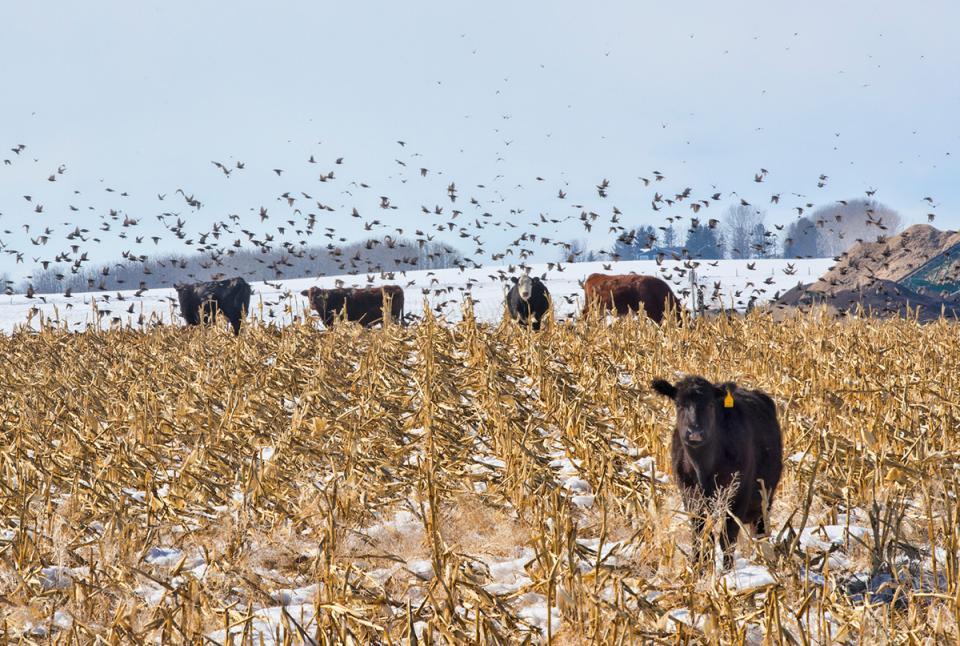
Pasture and Forage Minute: Cornstalk Nutrition and Winter Forage Snow Cover
Cornstalk Nutrition
Many cattle producers acknowledge that cornstalk grazing is not meeting the needs of their cows compared to past decades. So, what are those contributing factors?
First, average cow size is now larger resulting in higher daily forage intake per cow. This has led to stover stocking rates needing adjustment and/or nutrient supplements being used more frequently when grazing cornstalks.
Secondly, combine efficiency has improved, so less grain remains in fields after harvest. In the past, grain content in harvested stalk fields was estimated to be 4%; today, grain losses are below 2%. Exceptions might include corn fields where hail, high winds or other adverse weather increased stalk lodging.
Finally, overall cornstalk nutrients are likely lower compared to historic book values, such as a 4-7% crude protein cornstalk content estimates. Current corn hybrids are bred to move more plant stored nutrients into the grain at the end of the growing season. So, plants may cannibalize carbohydrates from stalks if nutrients are lacking in the plant to complete ear filling and plumbing corn kernels.
In some cases, nutrient deficiencies may simply have resulted in lower yields, such as a flex-hybrid corn producing 30 bushels less per acre. However, severely cannibalized stalks may have poor stalk quality and higher lodging and breakage. The upside for the livestock grazers, lodged fields may have more grain remaining in the fields; thus, potentially providing more energy for the grazing animals.
Corn pest resistance breeding has also improved insect and disease resistance. These improved genetics have reduced lodging and led to stalks that break down or digest less rapidly, leaving behind stalks that may be less palatable for livestock and fewer digestible nutrients.
Winter Forage Snow Cover
While winter is still several weeks away, much of Nebraska recently received the first snowfall of the season. This is a great time to remember the benefits of snow cover to winter forages, especially alfalfa.
The most significant roles snow cover has in protecting winter forages is to provide insulation to and prevent evaporation from the soil. By trapping heat energy, snow cover limits the depth of the frost layer, which protects forages from the damaging freeze-thaw cycle and mitigates winter kill. The effectiveness of this protection is dependent on how early in the season the snow cover is established. Late fall and early winter snowstorms collect and insulate the ground before too much heat is lost from the soil.
Having some stubble at the end of the growing season is a great way to catch this much-needed snow. If a late season harvest is unavoidable, cut high to ensure snow trapping stubble can still function. In an ideal situation, this snow insulation, winter hardy variety selection and giving forages the chance to properly winterize in the fall will keep winter kill to a minimum.
Snow is a great insulator and can help forages survive the winter. While snow may not always be a welcome sight, it can help to ensure your winter forage crop survives and thrives next season.
Online Master of Science in Agronomy
With a focus on industry applications and research, the online program is designed with maximum flexibility for today's working professionals.
